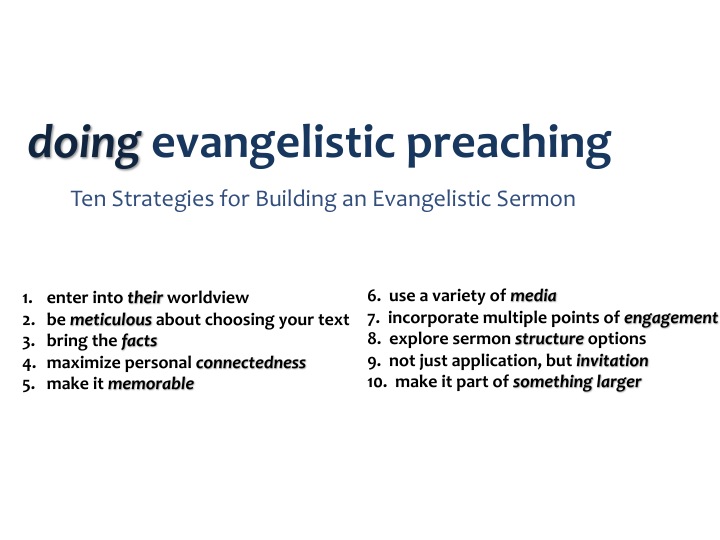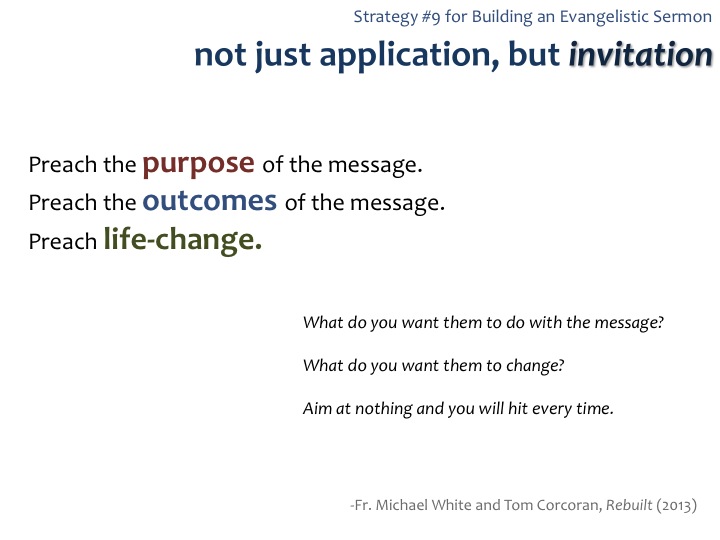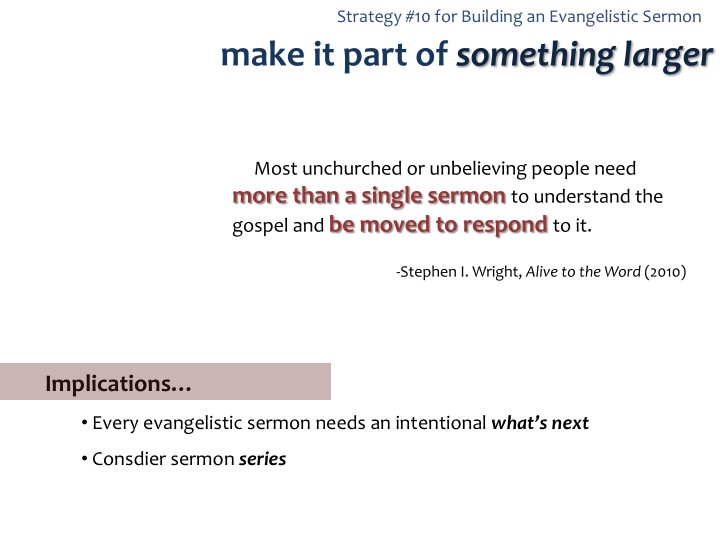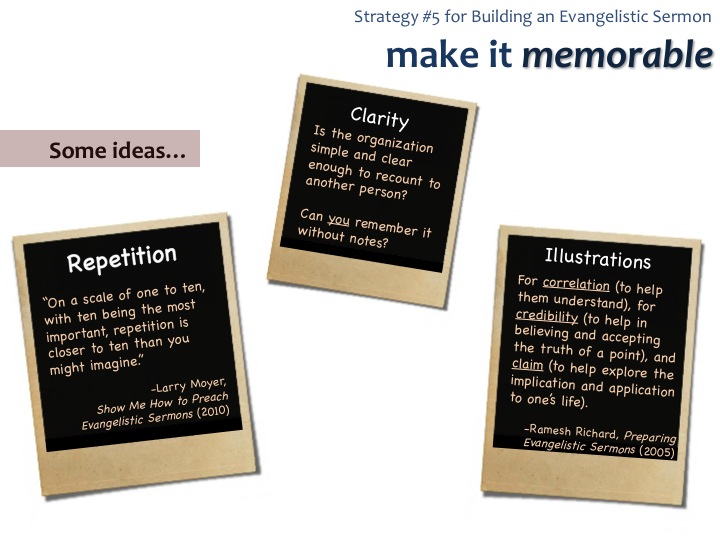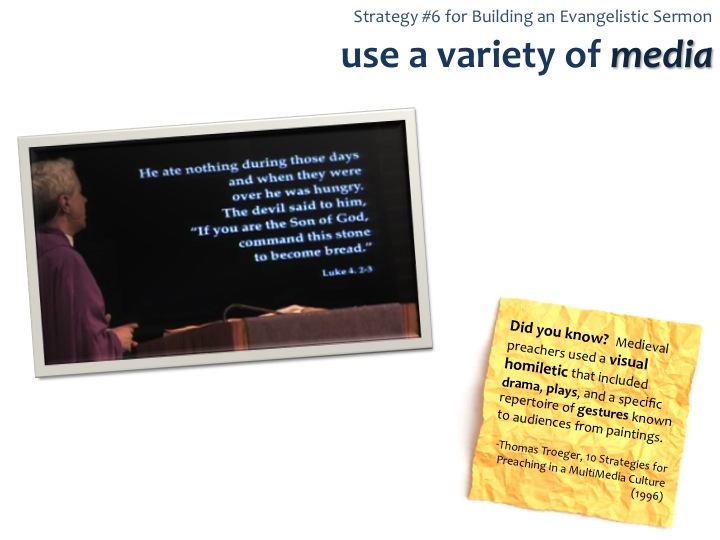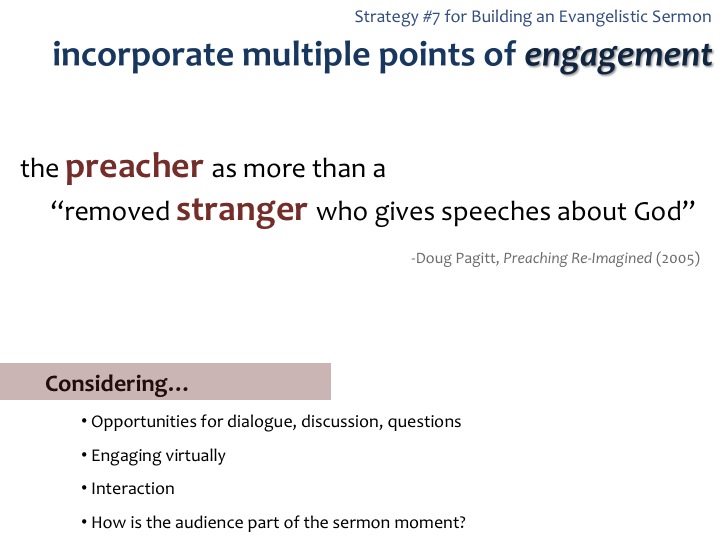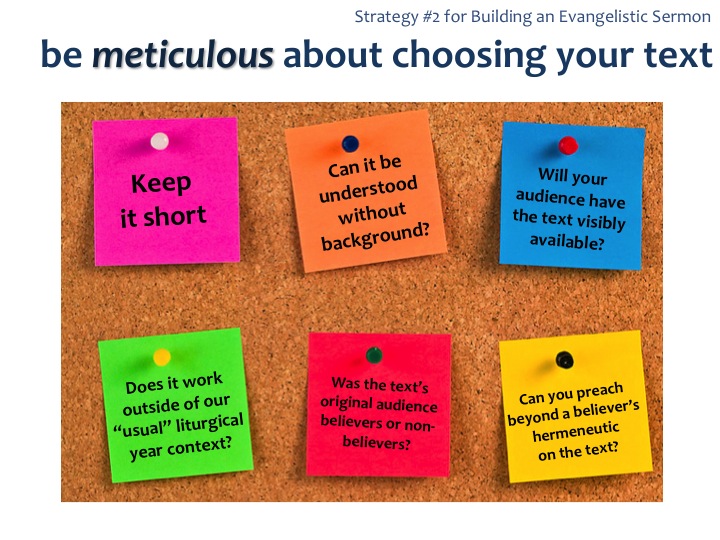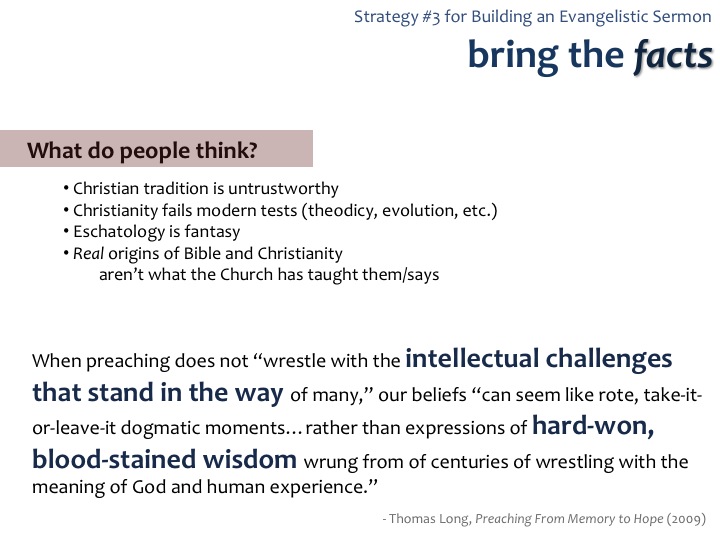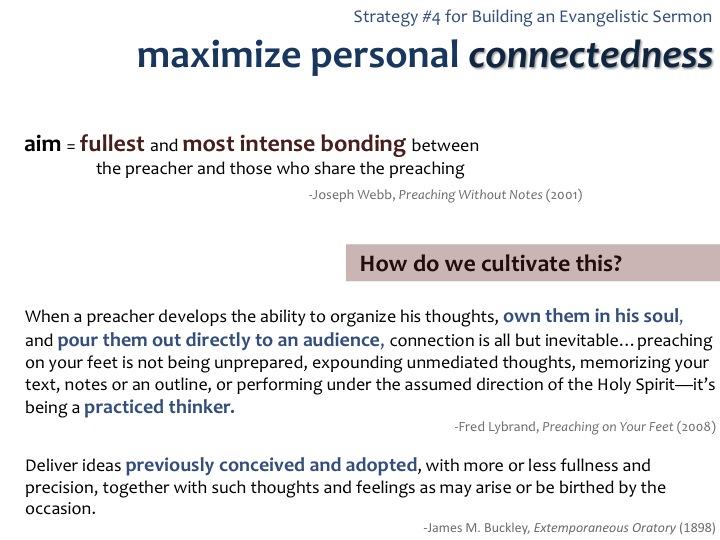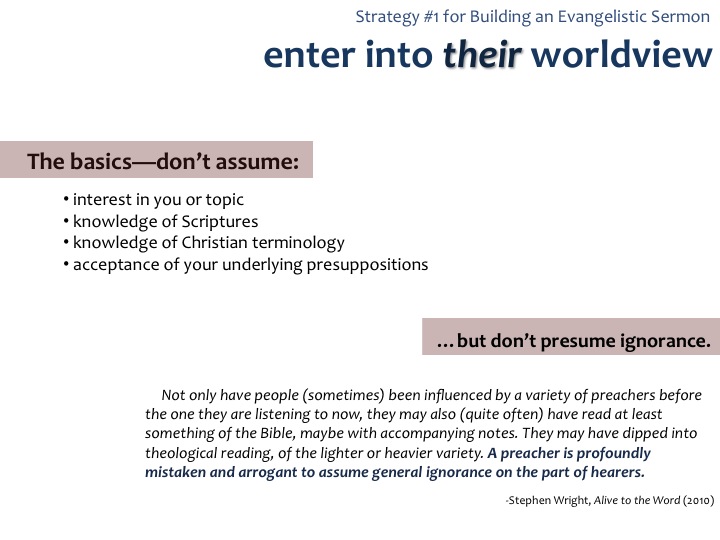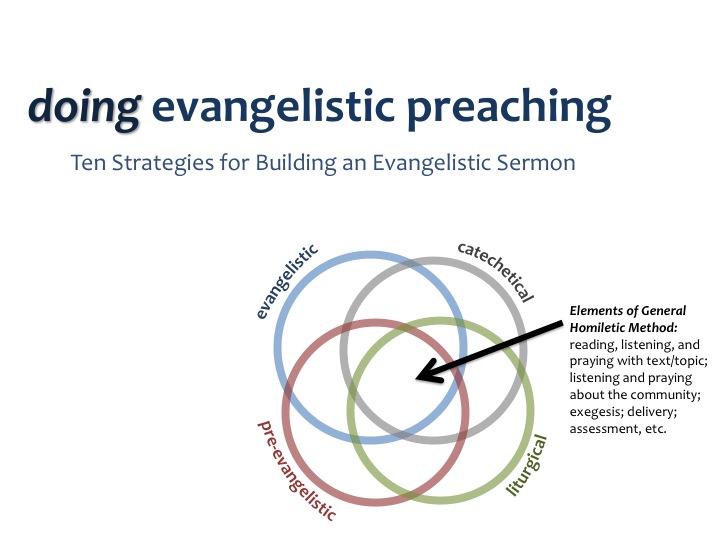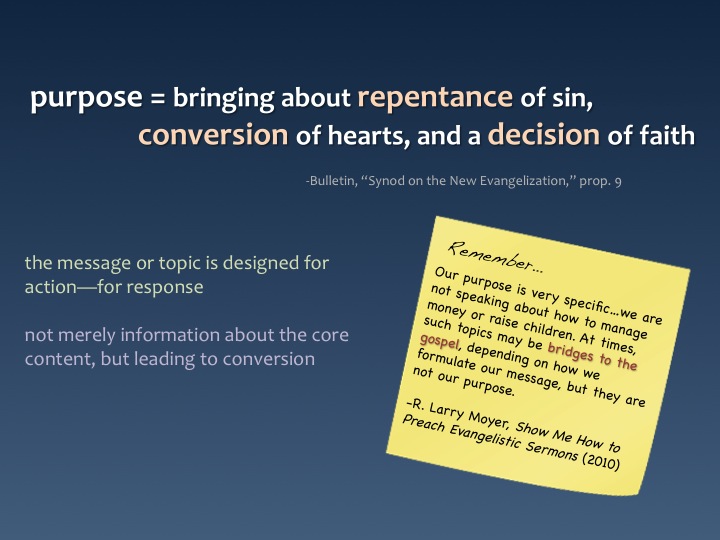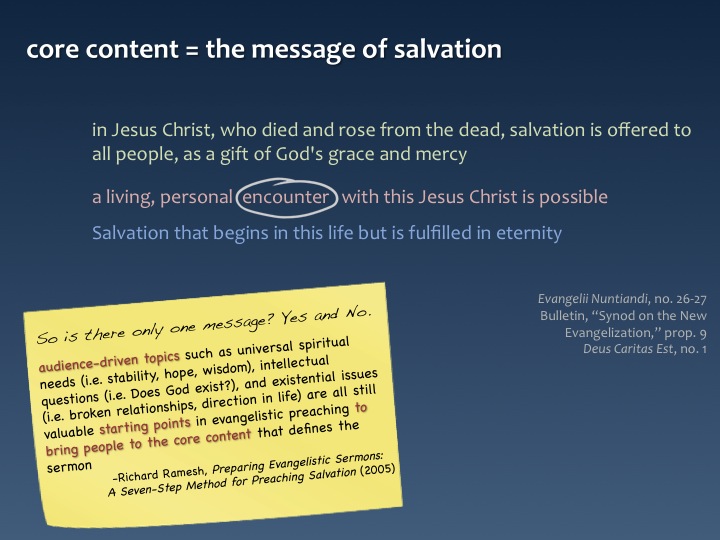This is the fifteenth post in a series on evangelistic preaching in Catholic contexts.
The parish is the focal point for evangelistic preaching because it is near where most people are. Most non-Catholics and Catholics who are in need of evangelistic preaching are not going to attend a diocesan rally, a retreat, or large conference—but, they may be regularly attending a parish or make a one-time visit to a parish in a time of need or spiritual inquiry.
How does a parish become a focal point for evangelistic preaching? First, we need preachers. Most parishes already have a combination of priests, deacons, and/or general [lay] ministers with homiletic training. Baptized faithful who are “orthodox in faith, and well-qualified, both by the witness of their lives as Christians and by a preparation for preaching appropriate to the circumstances” can be admitted by the bishop to preach (with the exception of the Eucharistic homily, which is not ordinarily a primary place for evangelistic preaching).[1] Parishes can take steps to help faithful parishioners discern the call to evangelistic preaching by cultivating a culture of sharing personal testimony, reflecting on one’s own conversion story in small-groups, and recruiting from within the flock.
The second key step for parishes is integrating evangelistic preaching into parish life. Though Mass is not intended to be a place for initial proclamation, certain Masses, i.e. Christmas, Easter, Mother’s/Father’s Day, and harvest or homecoming Sundays in certain regions, tend to attract a large number of visitors, a prime opportunity for evangelistic preaching.[2] Additionally, when parish leaders know the spiritual state of those in their pews well enough, they can determine what type of preaching is most appropriate for Mass, i.e. if most people are not yet committed disciples or evangelized, and Mass is the only opportunity you have to reach them–then even ordinary Eucharistic preaching probably needs to be evangelistic at heart (while making sure there are then other opportunities for more catechetical or discipleship oriented preaching for mature believers).
Parishes can also consider adding a service designed for evangelistic preaching. For many parishes this requires a radical re-orientation from an nearly exclusive focus on the “already converted” to allocating quality resources for initial proclamation, seeking to attract and offer something designed for the nominal believer or nonbeliever. This shift is at the heart of the call to the New Evangelization in the United States.
What might this look like? Possibilities for parish services[3] that incorporate evangelistic preaching include:
- Taizé-inspired prayer services.[4]
- Modeling a service after the XLT (pronounced “Exalt”) nights popular with teenagers and young adults. XLTs “combine quality music and a dynamic teaching with worship of the Eucharist in an energetic and reverent setting. In other words, you are sure to hear a fun and relevant talk, some of the best new worship music, and experience the intimacy of spending time with Christ in Eucharistic Adoration”[5]
- Reviving the Cathedral Vigil services (or other adaptations of the Liturgy of the Hours) popular in the Patristic era. A version of this is currently popular among young adults in Colorado.[6]
- Making use of services that do not include reception of the Eucharist, since receiving the Eucharist is often not applicable for someone in need of initial proclamation and allows for wider use of the baptized faithful as preachers of the Word or Liturgy of the Hours as a venue for evangelistic preaching (i.e. Liturgy of the Hours, Liturgy of the Word).
- Offerings modeled on small-group series, such as the Alpha Course,[7] or a retreat-based opportunity for preaching and decision, similar to a Cursillo.[8]
Finally, parishes can also bring evangelistic preaching outside the walls of the parish, to non-parish facilities. This includes offering evangelistic messages in public locations, virtually through the internet, using broadcast media, and in hospitals, Catholic schools, and prisons. Preaching in the public square is not limited to presenting a sermon. Processions and other visual aspects of the Catholic tradition offer settings where preaching could potentially be inserted, after the visual captures the attention and imagination of the audience.[9]
——-
[1] USCCB, “Complementary Norms: Canon 766 – Lay Preaching,” 2001.
[2] See “180 Week One: Easter,” a sermon preached by Fr. Michael White, March 31, 2013 as an excellent example of evangelistic preaching in an Easter Mass, http://churchnativity.tv/media.php?pageID=96.
[3] Charles Arn’s How to Start a New Service: Your Church Can Reach New People (Grand Rapids, MI: Baker Books, 1997) provides how-to steps on planning a new/additional service.
[4] See the Taizé community’s website for examples of contemplative ostinato music, intercessory prayer, and silence as characteristics of Taizé prayer: http://www.taize.fr/en.
[5] “XLT: Teaching – Adoration – Worship,” http://emmausyouth.squarespace.com/xlt/, accessed January 2013.
[6] “Young Adults Pray at Vigil Praise,” National Catholic Register, 13 April 2013, http://www.ncregister.com/site/article/young-adults-pray-at-vigil-praise/.
[7] See the Alpha USA website for more information: http://www.alphausa.org/Groups/1000065342/Alt_Home_page.aspx
[8] For a description of the Cursillo movement, see: http://www.cursillo.org/whatis.html.
[9] See “Lift the City: A Catholic Eucharistic Flash Mob,” http://youtu.be/cZ5aYoSr3Hg and “No, Not a Wedding, a Eucharistic Procession,” http://newevangelizers.com/blog/2013/04/30/no-not-a-wedding-a-eucharistic-procession/ as examples of how the visual can capture the attention of onlookers, offering a potential way for parishes to evangelistic preaching to the public square.

